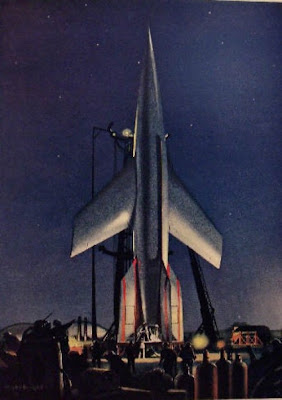I'll start by stating the obvious, that Clampett's "Coal Black" was the best cartoon that Warners ever made. If you think about it, it also had the best soundtrack of any Warner cartoon. It weaved a lot of different black themes into a European orchestral matrix. It did so more successfully than Gershwin was able to do in "Porgy and Bess," and it told a story and wasn't just a sort of rock video. Thanks to Bob and Stalling and the gifted black musicians they worked with, the soundtrack holds together as a street smart, satisfying whole. It fit the jazz/swing sensibility like a glove.
Of course the voices are part of that matrix. They drive the film along as surely as the music does. According to Wikipedia those voices included Beulah Dandridge (above) as the voice of the Wicked Queen (did she also do the throaty "Prince and the gal, what a sickinin' sight" dialogue?)....
...Vivian Dandridge (above) as the voice of Coal Black....
...and comedian and singer Leo Watson (above) as the voice of Prince Chawmin'....a great cast!
Now I have a question for you....what would have happened if Clampett hadn't left Warners in 1946? What if he and his unit, including Scribner and McKimson, had been able to stay together for a few more years? What if they had done more "Coal Black"-type cartoons? And here's an interesting question...what if they had given the whole Coal Black treatment to 40s nascent Rock 'n Rollers like Louis Jordan and his band?
Do you see what I'm getting at? What if Clampett's Warner style had allied itself to early Rock 'n Roll? It could have happened, and if it had...why, the whole medium of animation might have taken a different turn. Rock and Roll ripped through the era like a tornado and animation and cartooning might have hitched a ride with it. Animation and cartooning would have had a contemporary feel, and we would have been spared all the stupid animated films where we learn a life lesson at the end.
Imagine...animation that's street smart, that's for the whole family, not just kids, and that's genuinely entertaining with no condescension...the mind boggles.
Of course I'm dreaming. It could never really have happened. Soon after Clampett left Warners the film industry changed. The courts ruled that studios couldn't own theaters, the theaters deleted shorts in favor of double features, the Baby Boom took hold and people stayed home with their kids and watched TV...there was no money to do expensive shorts, and after a time, no venue.
Bob made a big sacrifice to do Coal Black. He had to do one, maybe even two cheater cartoons to pay for that film, and I imagine that couldn't have gone down well with the Warners management. He took risks to give us something new and exciting, but the world yawned and went in a different direction. Man, life is hard on creative people.
Here's a link to Coal Black. YouTube wouldn't let me embed it.






















































